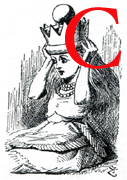
harlotte Brontë frequently employs natural imagery to illustrate dangerous realities that Jane herself does not see. At times, this imagery functions as straightforward symbolism. When lightning almost entirely sunders the chestnut tree in the orchard on the evening of her betrothal to Rochester, Brontë's condemnation of their proposed union becomes clear. However, Brontë also uses this image to foreshadow the transformations that will occur in Jane and Rochester and - since the tree is not divided at the roots — their eventual union.
At other times, however, Brontë incorporates natural imagery into a more elaborate stylistic technique known as word-painting in order to create more complex metaphors. In the Victorian era, writers generally employed word-painting at pivotal moments in the text and integrated the landscape portraits to blend plot, character, and theme. In the scene where Jane describes herself as "tossed on a buoyant but unquiet sea," Brontë warns the reader that Jane's romantic interlude with Rochester is not entirely a positive turn of events.
The emphasis on an "unquiet" sea informs the reader that Jane may well be in danger. And what is the nature of this danger? In the historical context of England in the 1840s, Jane's position is extremely precarious because Rochester's romantic overtures endanger her reputation. She has no familial network to protect her, and has not even the currency of being beautiful as a resource. The only currency Jane possesses is her good character and her reliance on Rochester's character as a gentleman. But, nineteenth-century conceptions of the gentleman bear little resemblance to Rochester. "He [a gentleman] is never mean or little in his disputes, never takes unfair advantage, never mistakes personalities or sharp sayings for arguments, or insinuates evil which he dare not say out... If he engages in controversy of any kind, his disciplined intellect preserves him from the blunder" [From The Idea of a University]. The disjunction between Rochester's behavior towards Jane and this description of proper behavior make apparent the peril in which Jane exists at Thornfield Hall.
Content last modified May 1994